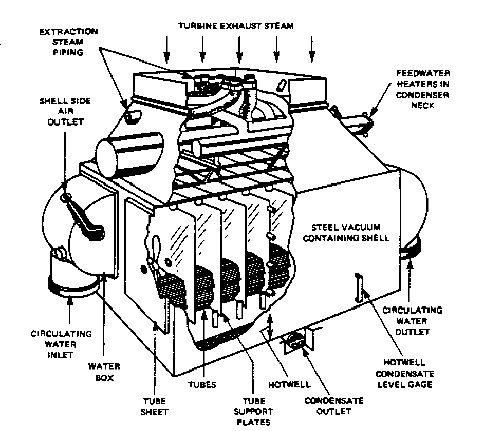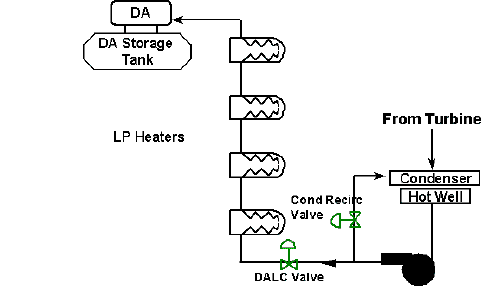|
Condensate Recirculation Valve
Application Discussion
AD102
June 15, 2003
The condenser is one of the most important pieces of equipment in a power plant. It is responsible for providing a high vacuum environment where the turbine exhaust steam can be condensed. The condenser is located at the exhaust of the low pressure turbine and is typically located under the turbine. In newer turbine designs, the condenser is located at the back end of the turbine. Figure 1 shows a cross section of a shell and tube condenser.

Figure 1: Cross Section of Condenser
The condenser is also responsible for providing a collection point for condensate so that it can be returned to the steam generator. It acts as a reservoir to adjust to fluctuations in the unit load demand while providing the suction head for the condensate pumps. The hotwell is sized to provide full condensate load for period of time, which is usually two – three minutes.
The condensate pumps provide the feedwater flow through the low pressure heaters to the deaerator. In order to protect the pumps from overheating and to prevent the subsequent formation of cavitation, a recirculation line is used to pass a minimum flow through the pump. Proper recirculation is accomplished by using a control valve that can withstand the condensate pump outlet pressure and vacuum in the condenser. Figure 2 shows the recirculation line around the condensate pump.

Figure 2: Condensate Pump Recirculation System
As the condensate recirculation valve is required to withstand a full pressure drop, the valve must be able to withstand any possible damage. As the inlet pressure to the valve varies between 300 and 600 psig and the pressure in the condenser is under a vacuum, the formation of cavitation is inevitable. Often times the service conditions will indicate that the valve is flashing, not cavitating. If one would look at the service conditions stated above, this phenomenon would appear to be occurring. However, most condensers have spargers installed to direct the flow away from the cooling tubes. These spargers create a backpressure on the valve and when coupled with pipe friction and elevation, this creates the need for cavitation control, not flashing control.
Fisher recommends the use of the Cavitrol trim in the appropriate valve body to address this application. The Cavitrol trim utilizes a staged pressure drop to eliminate the formation and subsequent vibration and damage associated with cavitation.
As with any severe service application, tight shutoff (Class V) is recommended. This protects the valve from damage when the valve is closed during normal operation. This also maintains pumping efficiency as excess leakage will create fluctuations in hotwell level and impact the unit load.
|